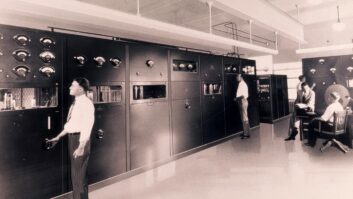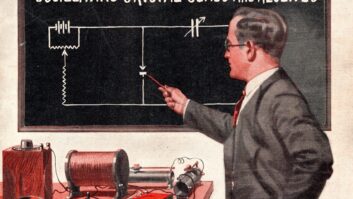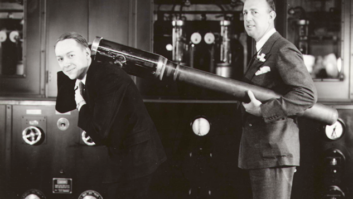This is the eighth installment in a recurring series that looks back at developments that have shaped radio broadcasting during the past 100 years, noting advancements and historical moments month by month. Read July’s story here.
100 Years Ago – August 1924: Citing a dearth of “high-quality” radio entertainment available to listeners, the newly-created National Association of Broadcasters has proposed an “unofficial” one-half percent tax be levied on all U.S. radio products. Tax stamps would be sold to set and component manufacturers who would affix them to their products. The revenue collected — estimated at $1.5 million (about $27.5 billion in 2024 dollars) — would be distributed to “25 of the most representative stations, in all parts of the country,” which would use the money to secure top-quality talent. The plan will be voted on at the upcoming September NAB convention. AT&T, operator of New York’s WEAF, has already applauded the proposal.
75 Years Ago – August 1949: A fierce controversy is brewing as to whether to lift the long-standing self-imposed ban on the advertising of hard liquor on radio stations, with some stations and groups welcoming the additional revenue, and others vehemently opposing it as an attack on morality. According to Methodist Church’s executive vice president of the bard of temperance, Bishop Wilbur Hammaker, “It would be as unseemly for the broadcasters to take the money as it would be for the distillers to give it.” However, as pointed out by U.S. Sen. Homer E. Capehart, “…no legislation can be enacted to prohibit sale though radio or press as long as the product is legal and conforms to fair trade regulations.”
50 Years Ago – August 1974: Broadcast coverage of the Aug. 8 unprecedented resignation of President Richard M. Nixon reached one of the largest audiences of the century, possibly only being topped by the 1969 Apollo 11 moon landing event. Nixon’s address to the nation was carried on some 2,700 radio stations.

In other news this month, a bill requiring all consumer radio receivers to include both AM and FM capability is making its way through the U.S. House of Representatives, with the House Communications Subcommittee approving it and sending it to the House Commerce Committee. (The Senate has already passed a similar bill.)
25 Years Ago – August 1999: With the century rapidly drawing to a close, many are wondering when the much-publicized IBOC digital audio broadcasting will become a reality. The three IBOC players — Digital Radio Express, Lucent Digital Radio, and USA Digital Radio — are reported to be working with both transmitter and receiver manufacturers to ensure that units are ready when a standard is established and the green light is given to begin broadcasting; hopefully, within the next two years.





